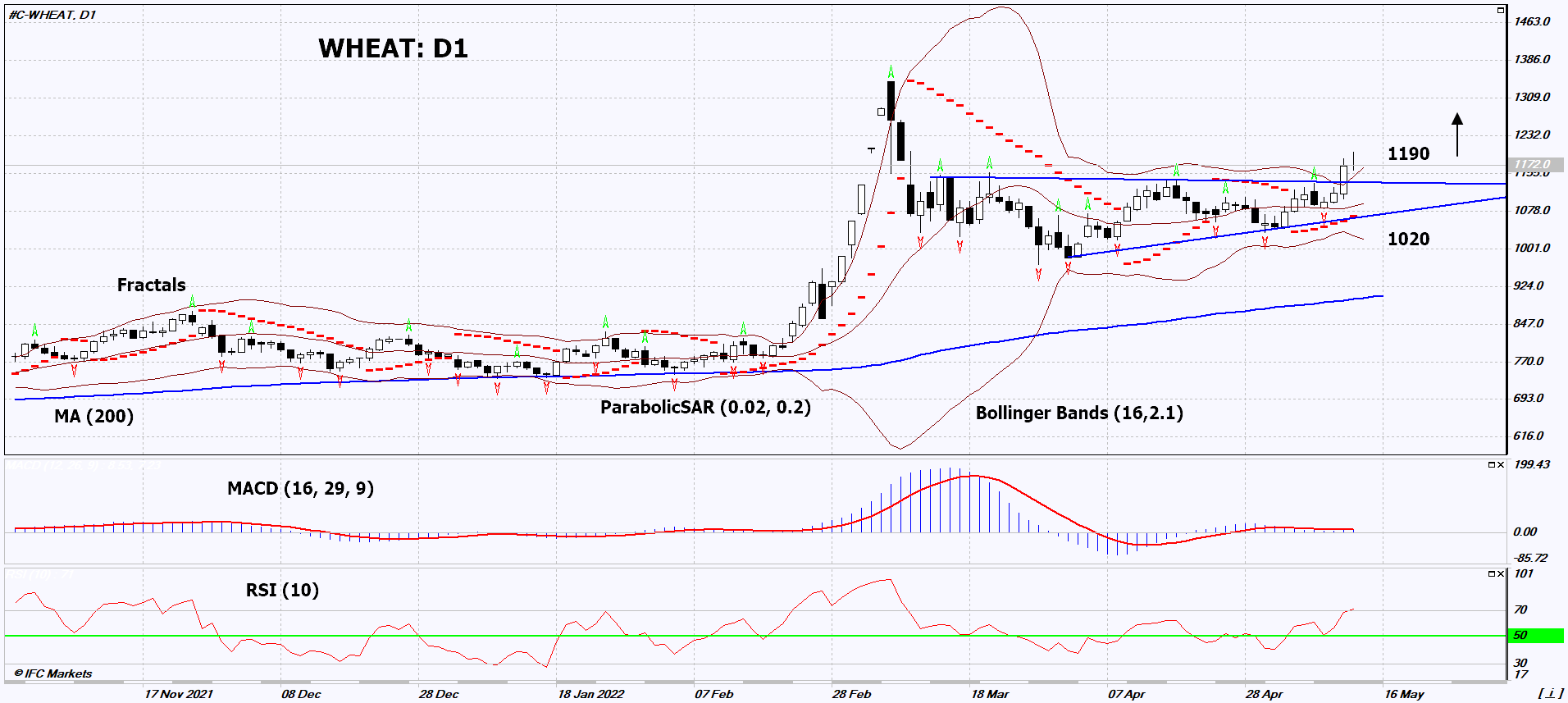Wheat Technical Analysis Summary
Buy Stop։ Above 1190
Stop Loss: Below 1020
| Indicator | Signal |
|---|---|
| RSI | Neutral |
| MACD | Neutral |
| MA(200) | Neutral |
| Fractals | Buy |
| Parabolic SAR | Buy |
| Bollinger Bands | Buy |
Wheat Chart Analysis

Wheat Technical Analysis
On the daily timeframe, WHEAT: D1 went up from the triangle. A number of technical analysis indicators formed signals for further growth. We do not rule out a bullish movement if WHEAT: D1 rises above its latest high: 1190. This level can be used as an entry point. The initial risk limit is possible below the Parabolic signal and the lower Bollinger line: 1020. After opening a pending order, we move the stop following the Bollinger and Parabolic signals to the next fractal low. Thus, we change the potential profit/loss ratio in our favor. The most cautious traders after making a trade can switch to a four-hour chart and set a stop loss, moving it in the direction of movement. If the price overcomes the stop level (1020) without activating the order (1190), it is recommended to delete the order: there are internal changes in the market that were not taken into account.
Fundamental Analysis of Commodities - Wheat
USDA reduced its forecast for the global wheat crop for the 2022/2023 season. Will the WHEAT quotes continue to rise?
USDA cut the forecast for the global wheat harvest in the 2022/2023 agricultural season by 4.5 million tons compared to the 2021/2022 season. Now it should be at least 774.8 million tons. World reserves will decrease more significantly - by 12.7 million tons. This will be supported by strong global demand, estimated at 787.5 million tones. The maximum decrease in the harvest is predicted in Ukraine, by more than a third or by 11.5 million tons - up to 21.5 million tons. Wheat production in Australia may decrease by 6.3 million tons and amount to 30 million tons. An additional positive for the quotes may be the risks of new anti-Russian sanctions. According to the USDA forecast, in the 2022/2023 season, Russia will retain the 1st place in world wheat exports and supply 39 million tons to other countries. This is 18.2% more than in the 2021/2022 season. It is obvious that the reduction of this volume for any reason can increase grain prices on world markets. In general, it can be noted that for the necessary balance of supply and demand, the USDA expects an increase in world wheat exports in the 2022/2023 season by 3.7 million tons compared to the previous season, contrary to the projected decrease in the global crop.